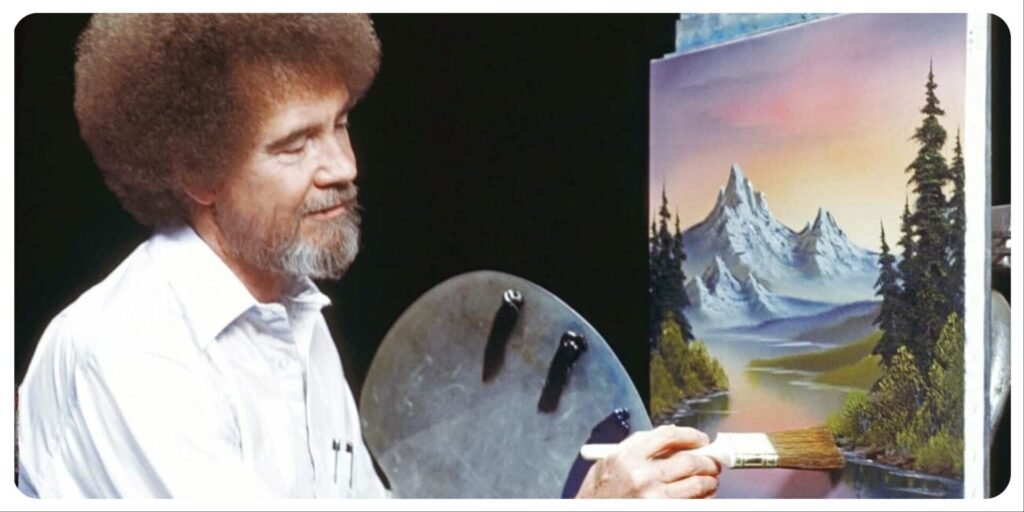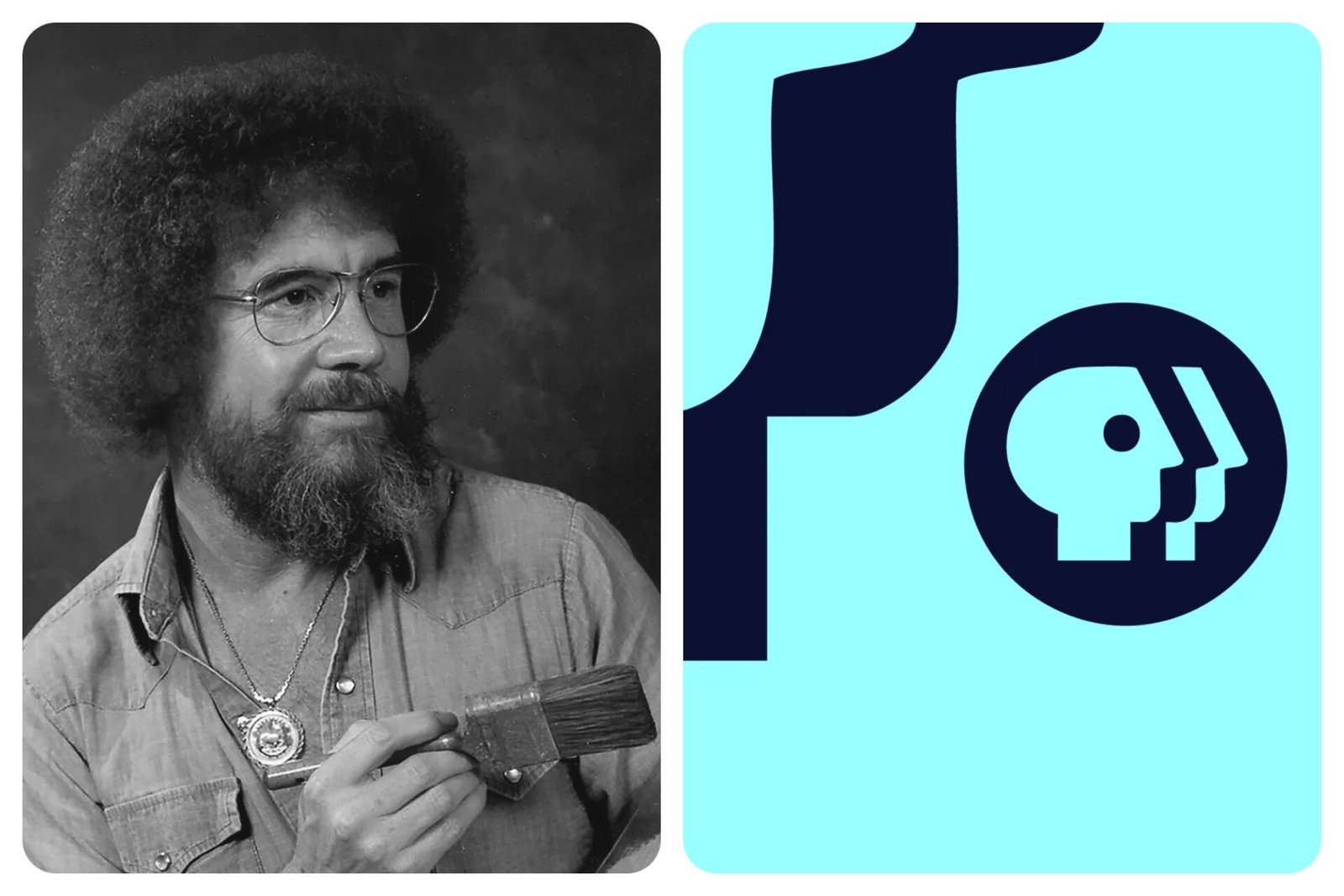When Bob Ross dipped his brush in paint and uttered his signature “happy little trees,” millions of viewers sat rapt before their screens: not only to learn painting techniques, but to connect with a gentle voice and calming presence. Now, decades after his passing, one of those brushes is being wielded again—this time, in service of public television.
An Unusual Fundraiser

Bob Ross Inc. has announced it will auction 30 original Bob Ross paintings, many of which were created live on episodes of The Joy of Painting. The sales begin November 11 in Los Angeles, with subsequent auctions in London, New York, Boston, and via online bidding. The beneficiary? Public television stations across the U.S.
According to Joan Kowalski, president of Bob Ross Inc., these paintings are being sold with all net proceeds earmarked to help PBS and affiliated stations meet licensing costs. In essence, the man who taught viewers to paint “almighty mountains” is now pitching in to keep the medium that broadcast him alive.
Bonhams, the storied international auction house, estimates that the 30 works may fetch a combined USD 850,000 to 1.4 million, though the final figure—and how much actually reaches public stations—will depend on bidding fervor and the costs deducted for fees, shipping, insurance, cataloging, and other auction expenses.
Why This Matters (Beyond the Paintings)

1. Public media under pressure
Earlier in 2025, Congress approved cuts that rescinded about USD 1.1 billion from public media funding. The result: staffing reductions, program slashes, and financial stress at many PBS and NPR stations. In one response to that funding gap, Bob Ross’s estate is stepping in—turning his art into a lifeline for the very institutions that once carried his show into American homes.
2. A legacy of accessibility
Bob Ross’s ethos was always about demystifying art. On The Joy of Painting (1983–1994), he encouraged average people—”just regular folks”—to pick up a brush. He made art accessible. Now, by funneling proceeds into public television, the sale leans into that same mission: delivering cultural content to every viewer, regardless of zip code or income.
3. The art market intersects with philanthropy
The art world has seen Bob Ross’s market heat up in recent years. Earlier in 2025, two Ross landscapes sold at Bonhams for USD 114,800 and USD 95,750, each topping presale estimates. Those results may give bidders confidence—and help propel the upcoming 30-painting auction into higher territory.
But caution is warranted: auction houses deduct various fees (buyer’s premium, insurance, catalog production, shipping). “Net proceeds” can be opaque, and the difference between headline totals and actual funds delivered to public stations might surprise some observers.
What to Watch in the Auction

If you’re interested in supporting the fundraiser, while netting a valuable piece of Ross’s work, here’s what to consider:
Lot listing and provenance: Which of the 30 canvases were painted on camera? Which were studio works? Evidence such as on-air provenance stickers or production records will matter to collectors.
Photography & presentation: The catalog images, condition reports, and framing details may influence buyer trust.
Final Brushstroke

Ross, whose warm voice encouraged us to see “happy little accidents,” is now offering his paintings to avert something far less accidental—a shrinkage in the public space for art and instruction. Whether this auction turns into a windfall or a modest aid, it’s a powerful gesture: an artist’s legacy used not just for personal value, but to help sustain the public stage upon which it first played.
As the gavel falls and canvases change hands, the question will be not just how much is raised—but how much actually breathes new life into the medium that once gave Ross his audience.
